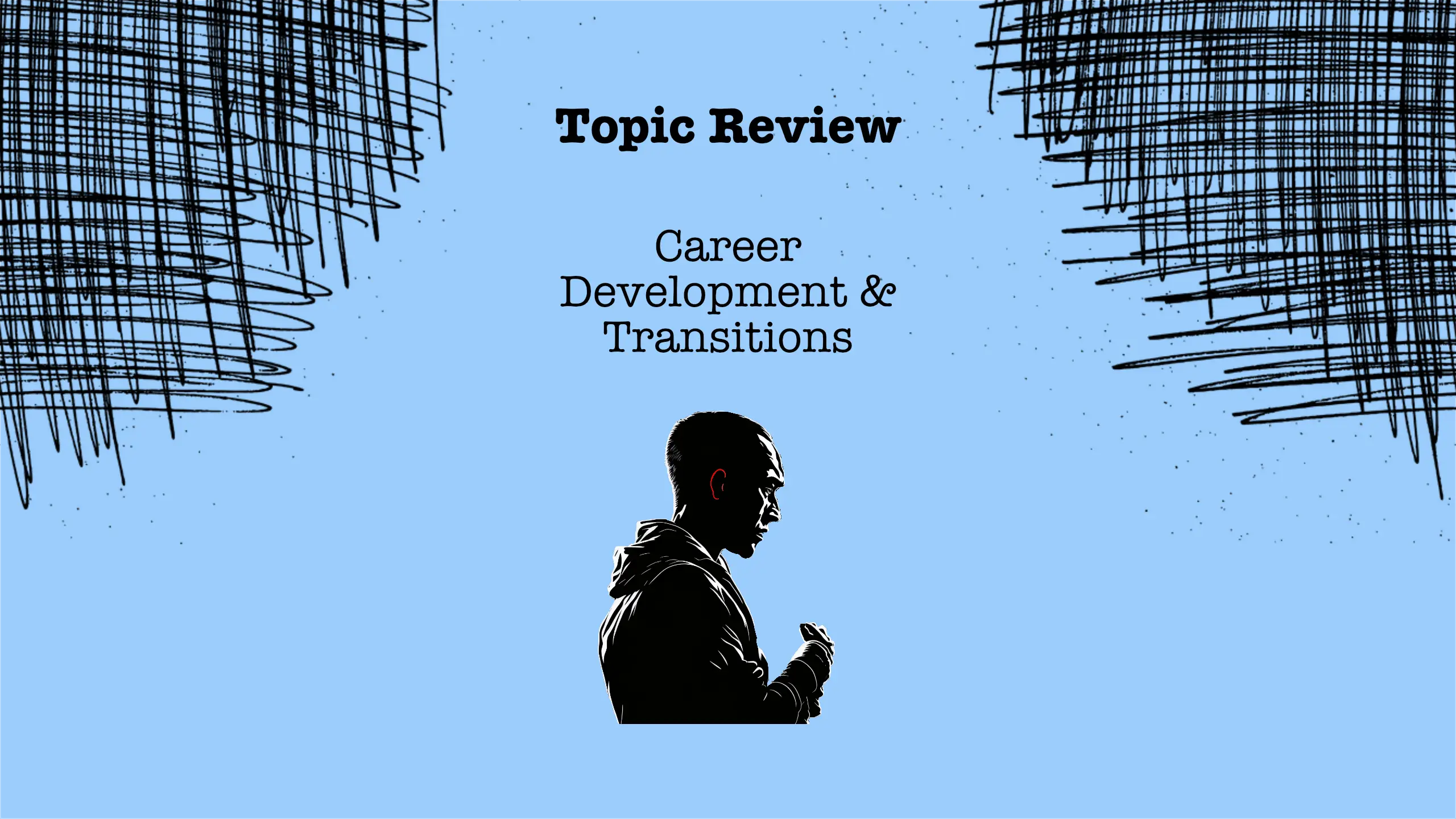The central focus of this review is the holistic and multi-level approach to understanding and supporting transitions during and after athletes’ sporting careers. Athletic careers are defined by both normative transitions (predictable developmental changes) and non-normative transitions (unexpected events). Successful transitions lead to personal and athletic growth, while crisis transitions may result in distress, maladaptation, or the need for professional psychological assistance.
Career Assistance Programs (CAPs) aim to help athletes prepare for and navigate these transitions, reducing the risk of psychological strain and supporting smoother adaptation to life after sports. Stambulova’s framework identifies ten core approaches to effective career assistance.
Key Ideas
1. Career stages and normative transitions
According to career models, athletes typically move through several descriptive stages:
- Initiation/Sampling
- Development/Specialization
- Perfection/Mastery/Investment
- Maintenance
- Discontinuation/Retirement
These stages may differ across sports, genders, and cultural contexts. Within them occur normative athletic transitions, such as:
- Beginning sport specialization
- Moving from junior to senior levels
- Shifting from amateur to professional status
- Transitioning out of sport (retirement)
2. The process and outcomes of transition
Transition models explain change through several dimensions:
- Preconditions and demands
- Coping processes and strategies
- Influencing factors
- Immediate outcomes
- Long-term consequences
Transitions are driven by the interaction between an athlete’s demands and resources.
- A successful transition results in adjustment and life satisfaction.
- A crisis transition indicates difficulty coping independently and the potential need for psychological intervention.
3. Preparing for athletic retirement
Effective adaptation to retirement depends on multiple factors:
- The voluntary nature of retirement (voluntary vs. forced).
- Timely preparation and life planning after sport.
- Access to educational and social resources (e.g., family support, career counseling).
- Individual attributes, such as competence, goal-setting, and transferable skills.
Cross-national research highlights cultural variations:
- Individualistic societies (e.g., Germany, Sweden) encourage planning and education.
- Collectivist systems (e.g., Russia, China) often reassign athletes to roles within sport.
- Satisfaction criteria and post-career identity are culture-specific, as seen in Sweden’s “being within the standard” norm.
4. When athletes need psychological assistance
Athletes may require support when facing unsuccessful or crisis transitions characterized by:
- Premature career dropout
- Overtraining, neuroses, or substance abuse
- Eating disorders or emotional burnout
- Inability to cope independently with post-career changes
Approximately 15–20% of elite retired athletes experience significant distress and require professional assistance to readjust.
5. Ten approaches to career assistance
Stambulova identifies ten interrelated approaches that define effective Career Assistance Programs (CAPs):
- Whole-career approach – supporting athletes through both normative and non-normative transitions.
- Whole-person approach – addressing athletic, educational, social, and emotional domains.
- Developmental approach – connecting past, present, and future career stages.
- Activity-specific approach – adapting interventions to sport-specific demands.
- Culture-specific approach – aligning support with cultural and organizational contexts.
- Individual approach – tailoring assistance to personal resources and barriers.
- Transferable skills approach – teaching life and coping skills applicable beyond sport.
- Multidimensional approach – combining counseling, education, and performance enhancement.
- Multilevel approach – addressing both surface symptoms and underlying causes.
- Empowerment approach – fostering autonomy and long-term self-management.
Selected Citations
- “Athletic career — multiyear voluntary activity aimed at achieving athletic peak (individual) in one or multiple sports events.”
- “Normative transitions — predictable challenges.”
- “Non-normative transitions — unpredictable challenges.”
- “Successful transition results from effective coping with transition demands through optimal use of resources and management of barriers.”
- “Crisis transition means inability to cope independently and implies need for psychological intervention.”
- “Career Assistance Programs are integrated and comprehensive combinations of workshops, seminars, educational modules, and counseling… supporting athletes in their athletic, developmental, and vocational growth.” — Wylleman, Theeboom, & Lavallee (2004)
Academic Reference
Stambulova, N. (n.d.). Career Development and Transitions.
External References
- Stambulova, N. (2010). Professional culture of career assistance to athletes: A look through contrasting lenses of career metaphors. In Ryba, T., Schinke, R., & Tenenbaum, G. (Eds.), The Cultural Turn in Sport Psychology. Morgantown, WV: FIT, pp. 285–314.
- Wylleman, P., & Lavallee, D. (2004). A developmental perspective on transitions faced by athletes. In Weiss, M. (Ed.), Developmental Sport and Exercise Psychology: A Lifespan Perspective. Morgantown, WV: FIT, pp. 507–527.
